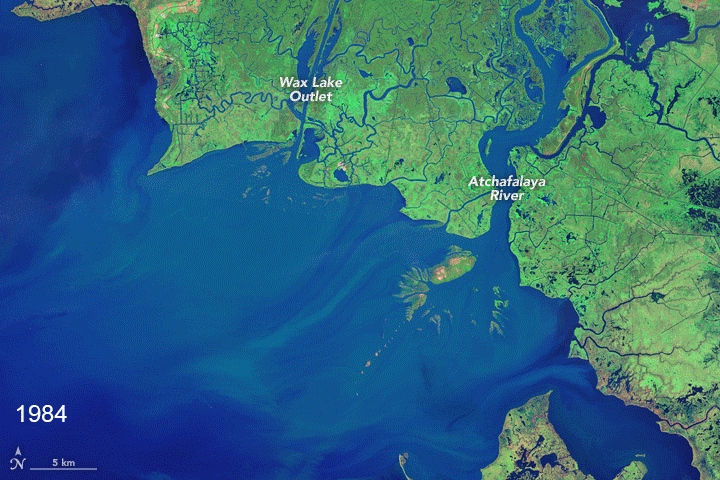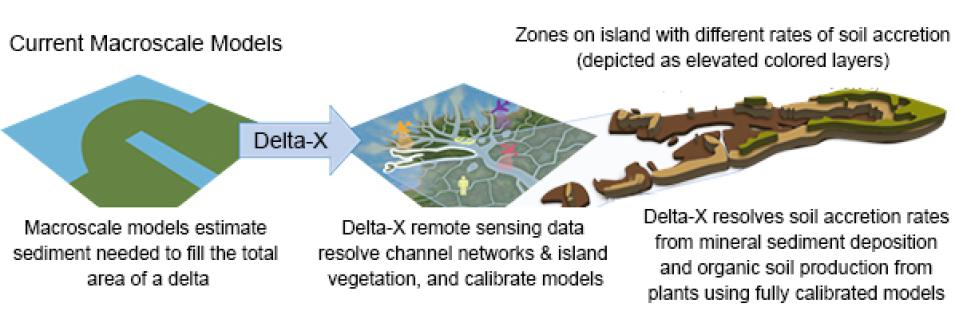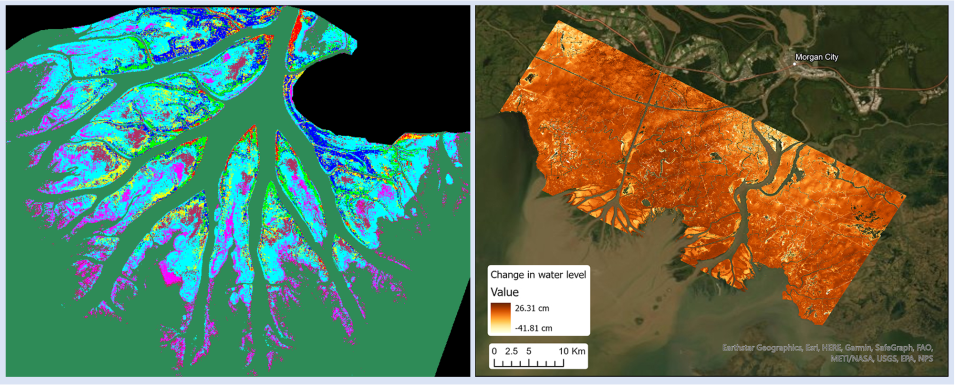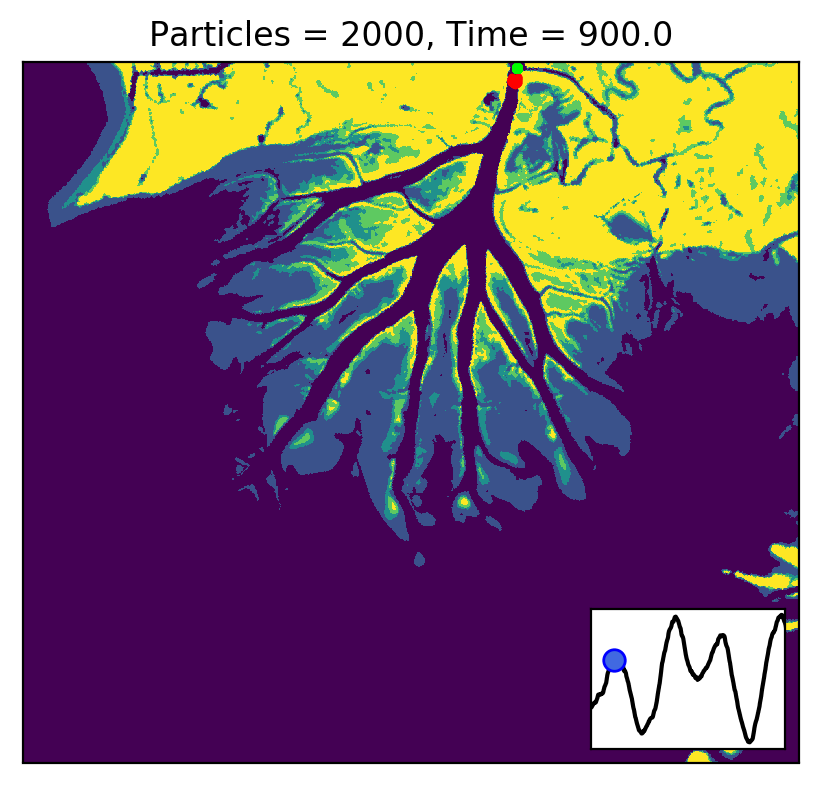Many of the world's large deltas are in peril due to coastal land subsidence and sea level rise. The Mississippi River Delta is one of these disappearing systems; it's the world's seventh largest delta and is a living laboratory where scientists can gather data to learn how to save these valuable ecosystems and the services they provide.
On average there is one delta for every 300 km of shoreline around the world. As rivers meet the ocean, slowing down and fanning out, sediments are dropped, forming a delta. Coastal waves, river discharge, vegetation, and tidal water flow all influence the development of deltas. Coastal communities rely on deltaic environments for many reasons and their disappearance can have catastrophic effects. Deltas serve as a buffer for storm surges, thereby protecting mainland areas; they serve as nurseries for a variety of marine organisms; they sustain and provide sustenance for biologically diverse ecosystems; and their soil serves as a filter that removes toxins from the water. The loss of a delta to subsidence and sea level rise would result in numerous environmental, economic, and social impacts on coastal communities.
The Mississippi River Delta is a unique testbed in that it is sinking in some areas, like the Terrebonne Basin, but growing in adjacent areas, like the Atchafalaya Basin to the west. The Terrebonne Basin is engineered (marked by channelization and levees), and this has decreased sediment flow to the delta floodplain. Large parts of the Atchafalaya Basin, conversely, allow rivers to deliver sediment to that basin. According to Delta-X principal investigator (PI) Dr. Marc Simard and co-PI Dr. Cathleen Jones at NASA's Jet Propulsion Laboratory in Pasadena, CA, the Mississippi River Delta offers the unique opportunity to investigate areas with similar vegetation and climate, but very different soil accretion patterns. Understanding delta formation in an environment like the Mississippi River Delta, that is experiencing both erosion and accretion, is important because the U.S. Gulf Coast is experiencing some of the highest levels of global sea level rise: between 9 to 12 mm per year, which is three-to-four times the global average.




